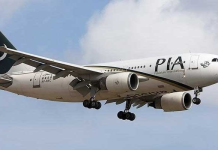The recent escalation of tensions between Thailand and Cambodia is a deeply troubling development for the Southeast Asian region and a serious challenge to ASEAN’s credibility as a platform for peace, unity, and regional integration. For two member states of a regional bloc often praised as a model of dialogue and diplomacy to stand at the brink of conflict is not just concerning — it strikes at the very foundation of ASEAN’s vision.
Reports suggest that both countries have now approached the United Nations Security Council (UNSC) to express their concerns, signaling the gravity of the situation. With Pakistan currently holding the rotating presidency of the UNSC, Islamabad has moved swiftly and responsibly to help avert a further deterioration in relations. Pakistani officials held a meeting with representatives of both Thailand and Cambodia in New York and urged both sides to show restraint and settle their differences through peaceful dialogue and diplomatic channels.
This is a moment of reckoning for the Association of Southeast Asian Nations. For years, ASEAN has been hailed globally as a unique model of regional cooperation — a bloc that, despite immense diversity in political systems, cultures, and economic levels, has managed to maintain internal peace and cohesion. It has often been cited as a success story of quiet diplomacy and consensus-building. And yet, today, two of its own members are embroiled in a conflict that could have severe implications for regional stability.
This is not merely a bilateral issue — it is a test of ASEAN’s maturity, responsibility, and unity. If ASEAN fails to act decisively, its moral authority and political relevance may suffer lasting damage. The world is watching to see whether ASEAN lives up to its founding principles of peace, dialogue, and mutual respect.
While territorial disputes or diplomatic misunderstandings are not unusual among neighboring states, the answer must always lie in dialogue and peaceful negotiation. It is unfortunate that the matter had to be escalated to the level of the United Nations before more serious regional mediation mechanisms were activated.
ASEAN must now urgently convene a special consultative meeting, bringing together Thailand and Cambodia under its umbrella to initiate a structured and constructive dialogue. It must offer itself as the principal mediator — not as a passive observer. This is an opportunity for the bloc to reaffirm its centrality in the region and to send a strong message that disputes among ASEAN members will be resolved within the ASEAN family.
Both Thailand and Cambodia, for their part, must rise above national pride and political calculation. As founding and long-standing members of ASEAN, they bear a shared responsibility to uphold the bloc’s values and prevent the region from sliding into confrontation.
The world today is already grappling with multiple crises — from wars to economic shocks to climate emergencies. Southeast Asia, under the ASEAN framework, has the potential to be a beacon of stability and cooperation. But that promise can only be fulfilled if ASEAN itself leads with wisdom, urgency, and moral clarity.

















